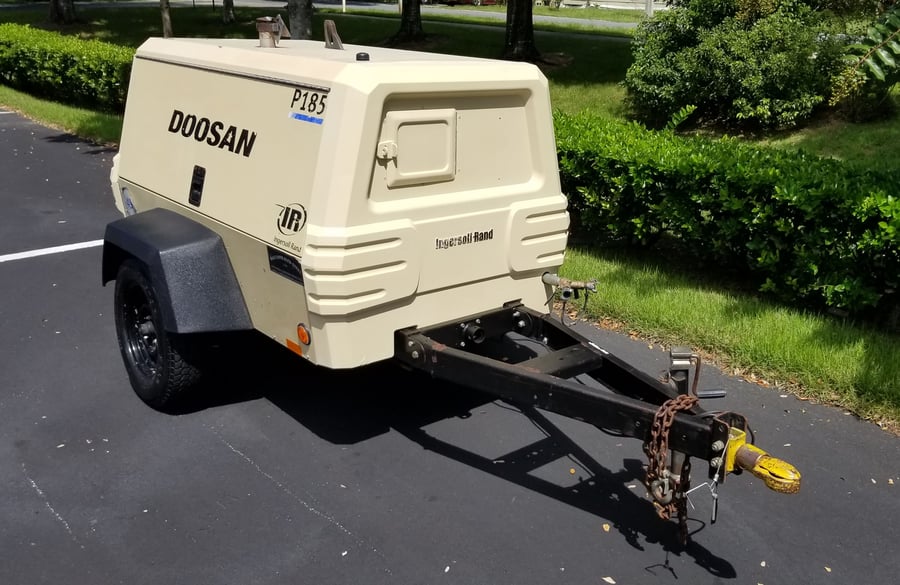
Stop Compromising Your Clean
When utilizing a portable diesel compressor in your dry ice blasting operation, it’s essential to take the appropriate steps to ensure you’re using dry air. Diesel compressors often supply hot, moist air, which can compromise the integrity of your dry ice and hamper the performance of your dry ice blaster.
The continuous energy from the engine powering the compressor produces hot air, directly competing with the dry ice. Since the thermal shock effect of dry ice blasting depends on the incredible temperature difference between the dry ice and the contaminant to break the contaminant’s connection to the surface, the integrity of the dry ice must be maintained. Hot or moist air from the compressor threatens this crucial process.
If you are just getting started and want to understand the fundamentals of the process, check out our blog: How does dry ice blasting work?

What are some concerns to look for?
- Dew Point: If the temperature of the air drops below the dew point, this will cause moisture within the dry ice blasting machine and potentially lead to clogging in the flow of the dry ice through the system. This directly impacts your efficiency and requires more frequent blaster maintenance.
- Moisture on the Surface: The compressor generates moisture which could pass through the system and be deposited onto the surface. This defeats the purpose of the dry ice blasting process, which is designed to be completely dry.
What’s the solution?
An aftercooler will cool down the hot air coming from the compressor and causes little to no effect on the integrity of the dry ice. The aftercooler also contains a water separator that traps moisture, helping you to eliminate excess moisture from the system.
The Cold Jet Aftercooler:
- Removes 2/3 of the water that’s found in the forms of ambient air and humidity.
- Decreases air temperature below the dew point and drains this water from the condenser bowl.
- Cools air down so you don’t see a temperature differential between the dry ice and ambient air on the surface, maximizing the thermal shock
It’s important to understand that the aftercooler should be as close to the machine and the application as possible. If you put it downstream close to the compressor, the air will cool down after it passes through, but once it travels the distance to the machine it will gradually heat back up, compromising the required dry air.
The effectiveness of the aftercooler can also be affected by climate and geography. Drier climates, such as the Midwest region of the United States, are ideal. On the other hand, more humid climates might require other methods of preventative maintenance to ensure dry air within your blasting environment.
The Takeaway
Whatever your blasting environment, it’s critical to understand the effect that hot or wet air has on the performance of your dry ice blaster. When you can limit or eliminate excess moisture, the performance of your dry ice blaster and the effectiveness of your overall dry ice blasting will greatly improve.
The aftercooler enables the operator the ability to control the moisture in their blasting environment, allowing them to effectively blast in virtually all temperatures and humidity levels.
This is a key component of effective preventative maintenance and ensuring consistent results with your equipment. If you have more questions about preventative maintenance for your equipment, check out our Customer Service website page.
Don't miss out on tips and tricks for optimizing your dry ice blaster! Sign up for our free newsletter, Cold Jet Academy, for more insights on dry ice blasting and blaster maintenance.
Contact us today if you're experiencing issues with wet or hot compressed air >>
.png) English
English